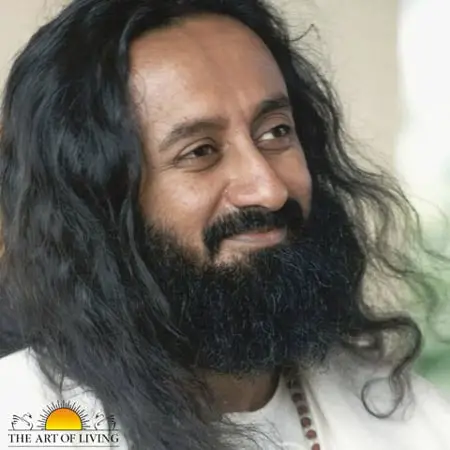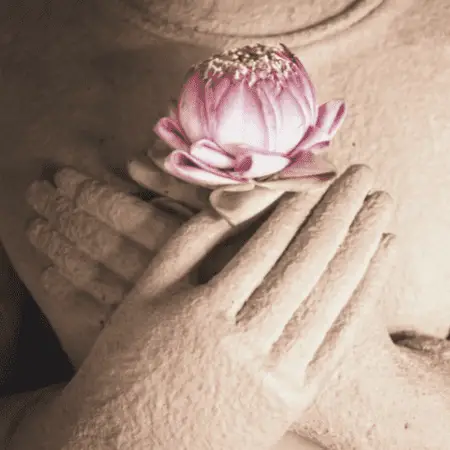It is common for meditators to be deeply impressed with the benefits that such an accessible practice can bring into our daily lives. And, wanting to share the knowledge of such a fantastic technique with our family and friends is only natural. However, if you are thinking of making it your mission to teach meditation officially, there is a little more to know.
To teach meditation, start from your practice, and refine your technique. Then, apply for immersive meditation teacher training courses, retreats, and certifications for specific techniques. Start your journey as a teacher by recording guided meditations or offering classes to your community.
Meditation, in itself, is a simple and accessible practice. However, teaching it can be a skill that requires hours of studying, research, and practice – find out what to expect from your journey below.
How to teach meditation: An Overview
You might have approached meditation like many others: you were stressed and decided to give a YouTube guided meditation video a try. There is nothing bad in this – these videos and guides are there to make the practice easily accessible for beginners and curious minds alike.
However, it is even better if you have decided to take your interest in meditation a little further.

You might have met inspirational meditation teachers along your way, or you have decided to take a purposeful journey to meet the right mentor. These teachers might be the ones to inspire you to become a teacher yourself and spread the benefits that meditation can bring even further and deeper into your community.
Whatever your background is, deciding to become a meditation teacher can be an enriching and challenging experience.
Indeed, meditation is an easy and accessible practice that everybody can approach and explore. There are no right or wrongs, and each practitioner will make the practice their own. Some techniques offer practitioners the necessary guidelines to get started, but everybody will follow their journey once the eyes are closed, and the breath is calm.
All this makes teaching meditation a challenging venture for most teachers. Indeed, every person is unique, and so their meditation practice will be. Some people will feel overwhelmed by the emotions and memories that the practice brings up. You might have to deal with people showing signs of anger, irritability, sadness, or euphoria.
Additionally, each type of meditation will have a different impact on the practitioner’s brain and body. Some of them will improve compassion, while others are more suitable to refine focus or increase self-awareness. Therefore, while you might be specializing in a specific technique, you will also have to keep in mind the importance of creating a suitable meditation program for every practitioner.
Who Can Meditate?
Whether you are just looking at approaching meditation for the first time or looking at taking your practice even further, be sure that you can! Everybody can meditate, and each practice is so personal and unique that there are no rights or wrongs here!
However, while everybody can meditate, many individuals feel overwhelmed or intimidated by this practice. It might be because of the beliefs associated with it or the complicated Sanskrit names used to describe the different breathing exercises.
Nonetheless, none of these preconceptions should stop you from exploring this transformational practice! Indeed, you can start by using guided meditation recordings or apps – and you can even fit in short meditation practice in your commute!
Meditation is a millennia-old practice, but the ways it is performed today are drastically different to better suit and benefit our lifestyle and culture. So, you can get started with your first session at any time.
And, if you still feel like this practice is out of your reach, it might be recommendable to get in touch with a mentor or teacher who can offer concrete guidance.
Who Can Be a Meditation Teacher?
Whether you have just started your meditation journey or have been practicing for years, anybody can become a meditation teacher. Of course, this is not granted.
Indeed, you will need to refine your practice first, understanding the different types of meditation and breathing exercises (Pranayama). If you have only been practicing for short periods, it might be recommendable to implement your practice and refine your technique before undertaking a meditation teacher training course.
Instead, you might have been practicing for years, but not often with consistency, or to become a meditation teacher yourself. In this case, an immersive training course and a mentor can help you pull everything you need out of your years-long practice and start teaching.
Ultimately, when driven by the right objectives and goals, everybody can become a meditation teacher. However, because of how transformational this practice can be for other people’s lives, it is crucial to understand whether you are truly ready for this step.
If you are, find out what to expect below.
Do You Need a Certificate to Teach Meditation?
One of the first things that come to mind is whether you need a piece of paper that certifies that you have completed a course to get started in teaching meditation. While this is not always the case, you will need to have a certificate if you teach more extensive groups of practitioners or in schools. You might also need to obtain certification if you wish to specialize in specific techniques.
However, applying for a course and obtaining certification should not be seen as something dreadful and unnecessary. Indeed, this time gives you the chance to refine your skills and work in close contact with a mentor or guide who can help you develop your skills further.
In turn, such an investment of time and resources can yield significant benefits. Indeed, certifications will make you more reliable and trustworthy in the eyes of new practitioners and a better candidate from the point of view of future employers (if you wish to work for a school or website, for example).
However, if you just can’t wait to tell your community how beneficial and inspirational meditation is, there are also some instances in which having a certification is not strictly required. Learn about all of this below.
Explaining Meditation Without Certifications

If you wish to explain meditation to your family, friends, or colleagues, you don’t need a certification. Your personal experience, in this case, will be enough for the job!
If you are a beginner, you should refrain from explaining meditation techniques, but you can still offer your point of view on your own experience.
However, you might have been practicing for years, refined your skills, and learned new techniques. And now, some of your friends are curious about how to approach meditation. So, you might decide to explain to them what you have been learning. Nonetheless, it is essential to approach the explanation at the right time and with the right resources.
When teaching your community about meditation, make sure you don’t overlook essential aspects, including:
- Breathing exercises and pranayama
- The philosophy behind breath
- Chakras and mudras
- The correct posture
- How to observe the breath
- How to remain focused
- What to expect from meditation
When Do You Need a Certification to Teach Meditation?
There are other occasions in which certification might be necessary. Certificates are not designed to discourage or prevent some candidates from becoming meditation teachers. They are a way for them to experience specific breathing techniques and meditation practices that they would not have the chance to explore without a mentor’s guidance.
Undertaking training courses and certifications are necessary if you think about teaching classes or guiding others into meditative states. Indeed, when in such a state, new practitioners might feel overwhelmed or intimidated, and they will rely on you to find the guidance they need.
That is why you must understand and experience the techniques you will introduce in your class.
A certification will also be necessary when you wish to specialize in a specific field. For example, you will need to learn specific (and more suitable) teaching techniques when working with teens and kids.
Some of the instances in which you will be required to have obtained a certification include:
- Guiding groups into meditative states
- Using particular breathing exercises and meditation techniques
- Teaching kids or teens
- Teaching people with specific objectives (such as relieving the symptoms of depression, anxiety, or PTSD).
It Allows You to Teach Certain Meditation Techniques
Certain types of meditation and pranayama techniques will require you to obtain specific certifications. For example, if you are looking at teaching Sudarshan Kriya, you will need to get a special certificate. This qualification is only available from the Art of Living and will be released at the end of a comprehensive training course.
Indeed, this breathing exercise is so powerful that it has been seen to help with several health conditions, including stress and high cortisol levels. This type of activity can also help you regain clarity of mind, increase your focus, and refine your mind-body connection.
Other examples of techniques that require a specific certification include Inner Engineering programs, which will require you to follow a particular course and graduate from it before teaching such techniques.
It is essential to understand that no school or body can release all the certifications needed. Instead, you will need to find the ones offered by individual courses. It is also essential for a practitioner to become a teacher to research the course they are about to undertake.
Meditation and Your Profession
As you approach meditation, it becomes clear that this practice will play an essential role in your daily life. This role becomes even more substantial if you decide to further move your interest and undertake a meditation teacher training course.
However, becoming a meditation teacher does not have to be an exclusive occupation or involve a drastic career change. If you are looking at carrying on your passion for teaching meditation during the weekends or in your free time, you can do so.
Nonetheless, you must keep up your practice and study and ensure that you keep developing over time. Even if you are not teaching a class daily, it is still essential to practice meditation, pranayama, and mindfulness best practices for yourself regularly.
You might also decide to take on a teacher training course in meditation to improve your current job. Indeed, it has been seen that meditation and mindfulness can help treat several health conditions and limit others’ symptoms. So, if you are working in psychology or as a manager, understanding how to bring meditation into the workplace or the treatments you deliver can help.
How to Become a Meditation Teacher
Now that you know what to expect and the implications of becoming a meditation teacher, it is vital to understand the steps you will have to start your journey.
Naturally, everybody will be driven by different reasons and motivations, and each experience is utterly unique. However, if you would like to know more about what to expect from becoming a meditation teacher, you can check out the exciting experience told in the video below:
Understand the Reasons Behind Your Choice
If you have decided to bring your passion a little further and become a meditation teacher, the chances are that you have done so because of specific motivations. It is crucial to understand what these are.
Indeed, if you are looking to do so to tap into the growing health and wellness industry, you might decide to invest in certifications and training courses straight away. While they might represent an investment at first, it is the fastest way to get your career started.
Instead, if you are looking to spread your experience and bring meditation to the life of the ones around you, you should focus on working on your experience first. Once you feel like you have gone through a valuable journey that you would like to share, you might invest in a course that can help you better deliver and communicate your experience in your community.
Some motivations behind this choice include:
- You have been working in wellness (such as yoga or fitness) or as a mental health professional and understand that meditation can be incredibly influential. So, you wish to incorporate meditation into your professional goal.
- You love learning and exploring new opportunities. Becoming a meditation teacher would offer you the chance to learn even more about meditation.
- You are incredibly passionate about motivation and can’t wait to share your gift with the ones in your community and beyond.
Value Your Experience
It is impossible to teach meditation to others if you don’t have a deep first-hand experience in practice. You don’t necessarily need to have been practicing meditation for several years and committed to long-term retreats. However, it is vital that you feel at a level where you can comfortably communicate your experience to others.
Indeed, you might have been practicing for just a few months. However, if you have attended retreats, met mentors, and studied different types of meditation techniques, your knowledge level might be higher than someone who practices limitedly for years.
Time-frames don’t necessarily define how expert you are in meditation. However, more time usually means that you have been practicing for longer. If you feel there still much for you to learn and experience, think about postponing the start of your training.
Understand What Type of Meditation You Wish to Teach
Not all types of meditations are the same, and you won’t be able to be an expert in all of them at once. Of course, it is recommendable to try the different types to understand what most interests you and work best for you.
However, among the many techniques you have been trying, there will be one or two that specifically catches your attention. In this case, you might consider focusing your efforts on that kind and decide to become a teacher in that specific field.
This choice might feel limiting at first. However, it can help you better define what to expect from the path ahead and identify clear opportunities. However, of course, avoid closing your mind towards other meditation and pranayama techniques.
Do You Prefer to Teach in Person or Online?
Meditation is best taught when you can join a group of practitioners. Additionally, a mentor who can guide you into deeper levels of meditation will also be beneficial. Because of this experience, you can start exploring techniques and depths much quicker than when learning meditations in other ways.
However, today, many courses and teachings are more easily accessible online. Therefore, you might consider using an online course when looking for the teacher training course to sign up for. Additionally, you might keep your career online and start teaching through online platforms and videos. These methods of learning and teaching meditation are something that more traditional teachers are still adapting to. However, they are also growing surprisingly fast.
Indeed, in a moment when everybody needs more support, online meditation courses, mindfulness apps, and YouTube videos have revolutionized the way meditators connect with each other. If you are thinking of joining this movement and keep your teachings online, you will undoubtedly benefit from an increased audience reach and higher flexibility.
Apply for Immersive Meditation Teacher Training Courses

Each meditation teacher training course is unique and different from any other. Some of the more traditional ones require you to stay in retreats or centers for weeks or months. During this time, teachers-to-be had the chance to work in close cooperation with a mentor and expert meditator.
However, today, it has become easier to find such essential teachings online. An increasing number of schools and teachers have created online courses and training facilities for students worldwide. So, you can now access such instructions from anywhere and complete your training at your own pace.
Additionally, deciding to complete your meditation training in this way allows you to choose among different choices. You can now pick a specific type of pranayama or a kind of meditation to resolve particular health conditions.
However, you might also decide to opt for a more immersive course at an accredited school. This option can be an optimal choice if you have several questions to ask and prefer to work together with an expert instructor.
Make sure you invest in and obtain all the qualifications needed to get started in the field.
Start Practicing Your Teaching Skills
No matter how many teacher training courses you have signed up for, nothing can prepare you for your first meditation class! You will have several people waiting for you to guide them into the depths of their minds.
This experience can be extremely overwhelming and intimidating, but you can take it in steps and test the waters.
Some tips to start teaching include:
- Perform sessions with your friends and family.
- Record guided meditation videos that you can upload on several channels, including YouTube and social media.
- Record videos and classes that you can submit to platforms such as Insight Timer.
- Organize meditation groups online on platforms such as Zoom or MeetUp. You could also organize in-person groups in your garden (if it is safe to do so).
- Once you feel more confident and you have reviews to count on, start distributing flyers in the neighborhood and host a class in a local park.
- Get in touch with the yoga and fitness studio in the area and ask them if you can organize meditation sessions once or twice a week.
- Create your channel or website and start teaching online.
Becoming a Meditation Teacher: What to Expect
As mentioned in a PsychologyToday article by Robert Puff, Ph.D., meditative techniques and practices that can be related to modern meditation have been around for over 5,000 years. These techniques have been evolving over the years, but religious ties and beliefs have often characterized them.
However, over the past few years, the benefits that meditation techniques can bring into our lives have become increasingly known, making such methods more appreciated and popular in Western countries.
At the same time, over the years, the ways meditation techniques are thoughts to practitioners have changed. Indeed, today, an increasing number of people are taking meditation classes online or through video-chats and apps.
When deciding to become a meditation teacher, it is crucial to consider all this. Indeed, you are likely to engage with immersive courses, group classes, and intense exercises for your training. However, when you teach meditation to other people, their goals might not be the same as yours, or they might not pursue the same kind of interest in spending hours meditating.
Indeed, in most cases, people are drawn to these techniques because they can help with several issues related to today’s lifestyle and culture. Meditation can help relieve stress, anxiety, mild depression, PTSD, and many other health conditions – even when practiced in bite-sized sessions!
Therefore, when looking at yourself becoming a meditation teacher, consider that you are likely to be doing so through apps, YouTube videos, or small classes. Being open to meditative practice changes is an excellent way to keep meditation accessible and suitable for everybody, from busy workers to anxious students.
Each Experience Is Unique
If you have been practicing meditation yourself, you know how personal of an experience it can be. The same type of meditation can even feel different from a day to another – even if you are an expert meditator.
When teaching meditation techniques to a class, it is crucial to keep this in mind. Each of your students will live the meditation session in a unique way, which is not comparable to any other. This aspect is what makes meditation a challenging experience and skill to teach.
It Requires Your Constant Experience and Spirit of Research
Becoming a meditation teacher won’t take you long. If you have already been practicing for several months or years, you can decide to undertake a certification or training course. These courses vary in length.
Some retreats are long and will require you to stay in a place for weeks or months at a time. However, you can also find more basic training courses online, which you can follow and complete at your own pace. You can see that how long it will take you to become a meditation teacher depends only on you and the course you have picked.
Nonetheless, once you have obtained your certification, it is not over! Indeed, you will need to ensure that meditation remains an essential aspect of your daily life. Additionally, you should continue to learn about new techniques and skills that you can experience and implement in your teachings.
Conclusion
Meditation is a transformational activity that is simultaneously highly accessible and truly beneficial. However, it can be extremely challenging and rewarding to see such developments take place under your eyes when it comes down to teaching others. This reason is only one of the many motivations that encourage meditation practitioners to become teachers.
This path is accessible to all, but having previous experience in meditation and a willingness to keep yourself updated, curious, and informed can help you bring the best out of the journey ahead.








